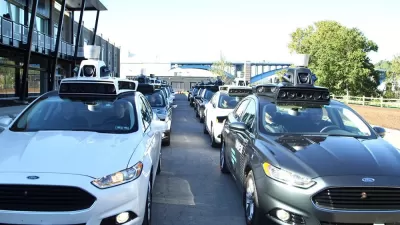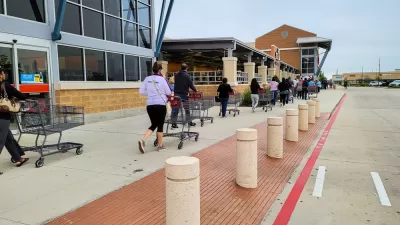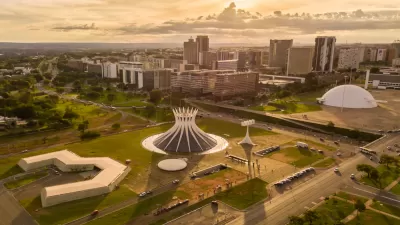Common Edge surveyed mayors and urban designers for ideas about what the next decade holds in store for cities. There were plenty of challenges in facing the world before the pandemic.

Before the impacts of the coronavirus pandemic had shut down cities in the United States, Common Edge surveyed mayors and urban designers for predictions on the next decade of life in cities. The context into which COVID-19 emerged sowed the seeds for the coming economic and public health shock of the pandemic.
All 44 mayors and 45 design leaders surveyed by Common Edge participated in the Mayors’ Institute on City Design last year. "Answers ranged from the practical to the alarmist, from the aspirational to the fantastical," according to the article, which groups responses into a few interrelated themes, such as those listed below:
- "The Existential Threats of the Last Decade Will Shift From the Theoretical to the Urgent" – In this case, the theme focused on climate change and affordability, but also focused on questions of privacy in an era of big data and the impact of autonomous vehicles.
- "Residents Will Demand That We Do Things Differently" –The rate of change in cities will require responsive and flexible government, according to the answers provided here.
- "What’s Old Will Become New Again" – Urban residents will continue to seek authentic experiences, with an orientation to the public realm.
- "Cities Will Lead With Landscape as the Era of Single-Objective Infrastructure Ends" – Resilience will require a new, more efficient approach to infrastructure, according to this theme.
- "Cities Will Become the Primary Stewards of Social Infrastructure" – This theme predicts that climate change would require cities to lead in maintaining the "connections and glue that bind communities together," but COVID-19 might have moved up the timeline for this prediction.
FULL STORY: How Mayors and Design Leaders View the Coming Decade

Planetizen Federal Action Tracker
A weekly monitor of how Trump’s orders and actions are impacting planners and planning in America.

Maui's Vacation Rental Debate Turns Ugly
Verbal attacks, misinformation campaigns and fistfights plague a high-stakes debate to convert thousands of vacation rentals into long-term housing.

San Francisco Suspends Traffic Calming Amidst Record Deaths
Citing “a challenging fiscal landscape,” the city will cease the program on the heels of 42 traffic deaths, including 24 pedestrians.

Defunct Pittsburgh Power Plant to Become Residential Tower
A decommissioned steam heat plant will be redeveloped into almost 100 affordable housing units.

Trump Prompts Restructuring of Transportation Research Board in “Unprecedented Overreach”
The TRB has eliminated more than half of its committees including those focused on climate, equity, and cities.

Amtrak Rolls Out New Orleans to Alabama “Mardi Gras” Train
The new service will operate morning and evening departures between Mobile and New Orleans.
Urban Design for Planners 1: Software Tools
This six-course series explores essential urban design concepts using open source software and equips planners with the tools they need to participate fully in the urban design process.
Planning for Universal Design
Learn the tools for implementing Universal Design in planning regulations.
Heyer Gruel & Associates PA
JM Goldson LLC
Custer County Colorado
City of Camden Redevelopment Agency
City of Astoria
Transportation Research & Education Center (TREC) at Portland State University
Jefferson Parish Government
Camden Redevelopment Agency
City of Claremont





























